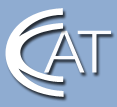Explore high-paying careers in clean, high-tech Connecticut manufacturing.

Educators: Externships
Work-based Learning Projects
Project: Utrasonic Welding of Plastic Parts - lab activities
Name of NGM Educator: Richard Weber, Ph.D., Automated Manufacturing Professor |
Name of Host Company: Branson Ultrasonics |
Grade Level: 1st year students entering Engineering Technology |
Student Work Types: Type 1: Workshop Assignments and Exercise |
Task "A" Abstract: The students are given a 3-hour workshop covering the theory, applications and equipment used to join plastic components by ultrasonic welding. During the workshop, the students complete several practical assignments at the end of each of the four workshop modules. The four modules are:
|
Task "A" Objectives:
|
Task "A" Description and essential outcomes: Objective 1 - Task "A"
Objective 2 - Task "A"
Objective 3 - Task "A"
Objective 4 - Task "A"
|
Abstract for Task "B" The students conduct laboratory experiments to demonstrate and reinforce their learning knowledge of ultrasonic welding of plastic components. The lab assignments consist of specifying equipment operating conditions, selecting appropriate tooling, and actually running the equipment. The students collect data, analyze results, and prepare conclusions as part of a written report. The experiments include actual assemblies, such as welding a clear plastic window into a 'pager' (telecommunication) housing. |
Objectives for Task "B"
|
Description and essential outcomes for Task "B" Objective 1 - Task B
Objective 2 - Task B
Objective 3 - Task B
Objective 4 - Task B
|
Resources Required: For Task A - The workshop materials are prepared in hard copy for handouts to the students and on a CD for Powerpoint presentations. For Task B - The equipment, tooling, and plastic components required for all the experiments have been supplied by the sponsoring company. |
Prerequisites required: A basic level of algebra and a high school diploma |
Work Environment: Lab setting |
Educator's Comments: The externship program is an excellent vehicle for getting hands-on experience in high technology areas. |





